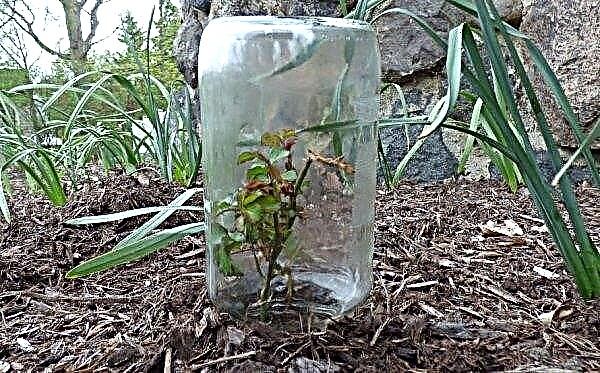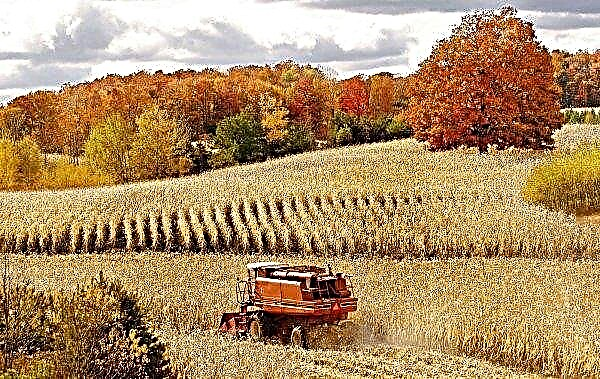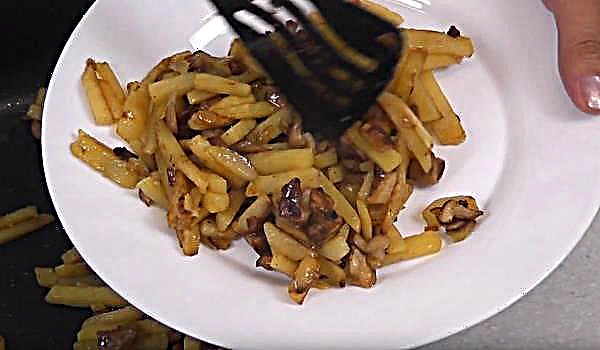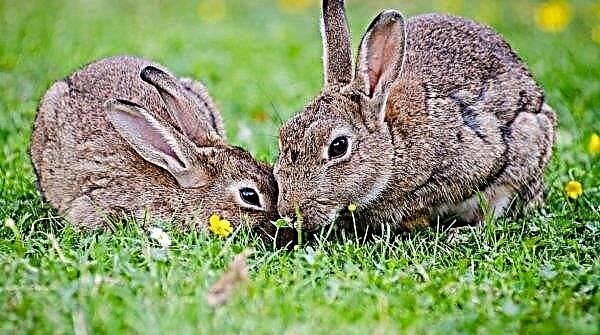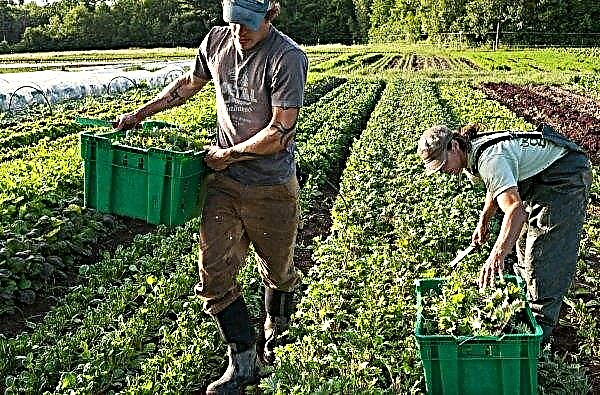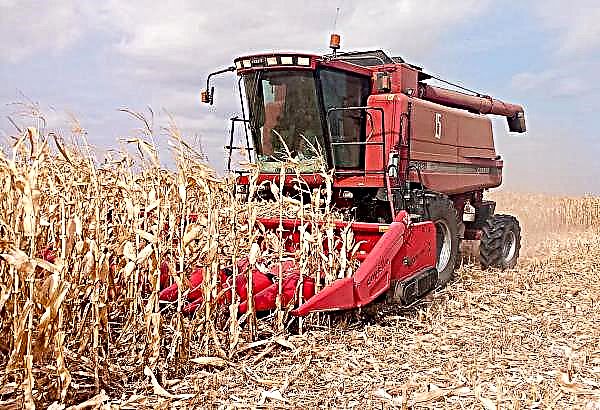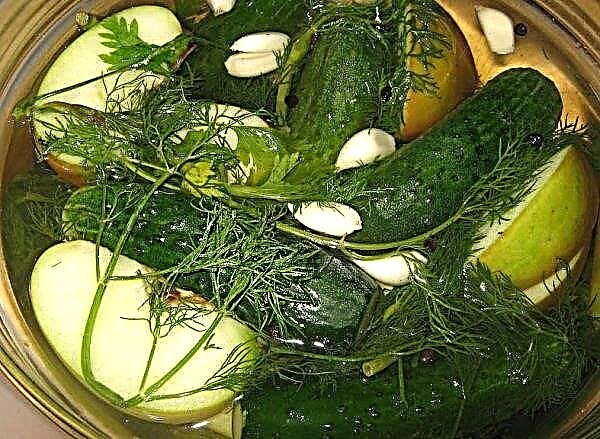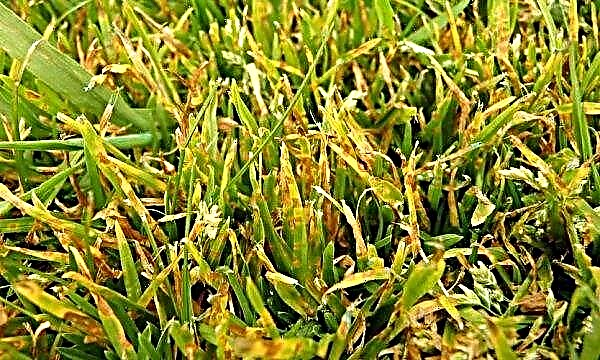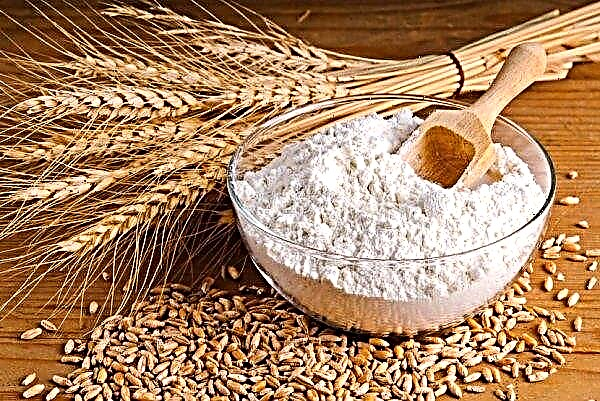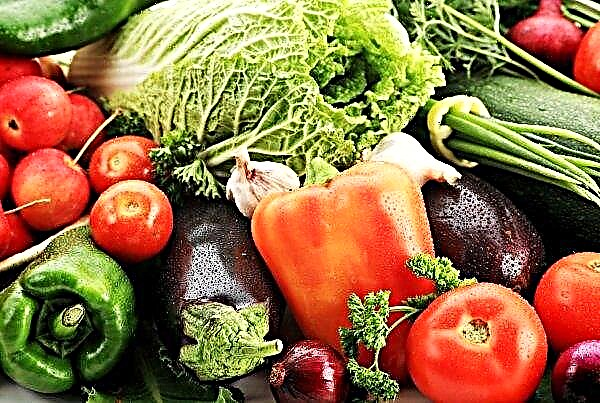Each gardener at least once in his life is faced with the fact that his plants begin to hurt, wither. In such cases, the cause should be eliminated and timely assistance should be given to vegetable crops. The material will discuss the causes of yellowing of cucumber ovaries and how to eliminate them when growing cucumbers in a greenhouse.
Why do the ovaries of cucumbers turn yellow in the greenhouse and what to do
If you notice that the cucumbers in the polycarbonate greenhouse or in the greenhouse ovary turn yellow, dry and fall off, then there may be several reasons for this:
- improper cultivation conditions;
- mistakes when leaving;
- thickening of landings;
- defeat by diseases or harmful insects.
We suggest dealing with each of the reasons in more detail.
Violation of growing conditions
When cultivating cucumbers indoors, it is important to create and maintain the following conditions for them:
- adequate lighting;
- warm temperature;
- high humidity;
- loose soil with good conductivity of moisture and air;
- regular airing in the absence of drafts.
If any of these conditions is violated or instability of the medium is observed, the cucumber can react with yellowing of the ovaries.
Lack of light
First of all, such changes in the development of vegetable crops may occur due to insufficient lighting. Bushes need light 12 hours a day.
There is little light for the bushes if they are not properly tied. The best methods of garter for cucumbers in a greenhouse are V-shaped, when plants are tied through one to the right and left wire, as well as trellis.
The fact that the bushes lack light is also affected by the lack of formation of the bush. From the sinuses of 3-5 leaves of the lower tier, stepsons should be removed. The shoots located above will need to be pinched after the second leaf.
Did you know? The largest cucumber in the world was grown in England. Its length was about 92 cm. It is listed in the Guinness Book of Records.
In second-order stepchildren, formed from the sinuses of the leaf of the whip, which is not essential, it is necessary to remove the growth point after the formation of the first leaf.
Incorrect temperature or humidity.
The lack of control over temperature and humidity indicators in the greenhouse is one of the main causes of problems when growing cucumbers and drying ovaries, including.
Cucumbers are thermophilic, which means that they do not tolerate lowering temperatures below + 12 ... + 14 ° С. The owner of the greenhouse needs to monitor the weather forecast and in case of the observed cooling, cover the plantings with a film.
The recommended air temperature for growing cucumbers is + 22 ... + 24 ° С, during the period of the appearance of fruits - + 23 ... + 26 ° С. The maximum allowable temperature difference is 6 degrees.
Soil temperature should be at the level of + 25 ... + 30 ° С. A temperature of + 13 ° C is considered critically low.
The optimum humidity for growing cucumbers is 85–90% on clear days, 75–85% on cloudy days. Exceeding this indicator provokes disturbances in the development of the plant, as well as damage to its diseases. Frequent airing allows you to reduce humidity.
Improper care
Cucumbers require regular care, which includes activities such as watering, top dressing, pruning, tying, preventive spraying. If any of these actions is not performed or is done poorly, the plant will suffer and show this with changes in appearance.
Irrigation
Since cucumbers are almost 98% water, the establishment of a competent irrigation regime is a very important condition for their cultivation.
This vegetable crop does not tolerate unstable and scarce watering and can almost instantly respond to yellowing and dropping leaves and ovaries. The cucumber tolerates the absence of moisture especially badly during the fruiting period.
The cucumber tolerates the absence of moisture especially badly during the fruiting period.
Greenhouse cucumbers are advised to water often - up to 5 times a week. It is important not to waterlog the soil. In case of waterlogging, drying by ventilation is required. Reducing the number of irrigation can be achieved by mulching the beds with straw or dry grass.
Watering cucumbers is necessary only with warm water - heated to a temperature of + 25 ° C. Cold water provokes the development of diseases, a significant decrease or loss of harvest.
Important! In sunny weather, it is recommended to water cucumbers in the evening, in cloudy in the morning.
Incorrect fertilizer application
Most often, gardeners make such mistakes:
- are fond of frequent top dressing;
- Do not feed vegetables at all;
- do not take into account the needs of cucumber at different stages of development.
We emphasize that the application of fertilizers for cucumbers is a mandatory procedure. It is not worth neglecting it, as this guarantees the correct growth, development of the plant and successful abundant harvest.
Here's what you can feed cucumbers:
| Top dressing period | Fertilizer Options |
| 2 weeks after planting seedlings | Superphosphate (20–25 g) + potassium sulfate (15–20 g) + ammonium nitrate (10–15 g) + water (10 l) |
| During flowering |
|
| In the fruiting phase |
|
 Be sure to take into account the needs of the plant at one or another stage of development. So, for example, before flowering, it should actively grow and gain green mass. At this time, nitrogen is needed. In the future, nitrogen-containing fertilizing will already be harmful to cucumber bushes. During fruiting, potassium and phosphorus-containing fertilizers come first.
Be sure to take into account the needs of the plant at one or another stage of development. So, for example, before flowering, it should actively grow and gain green mass. At this time, nitrogen is needed. In the future, nitrogen-containing fertilizing will already be harmful to cucumber bushes. During fruiting, potassium and phosphorus-containing fertilizers come first.It is important to understand that even with well-fed dressings, plants may not absorb the proper amount of minerals. This happens in case of poor soil care. So, in the absence of loosening, top dressing simply will not reach the roots due to excessive soil density.
If weeding is not carried out, there is a risk that valuable elements absorb weeds, therefore, recommendations for regular soil care should not be neglected.
Wrong pollination
Among modern cucumber varieties and hybrids, the main part is parthenocarpic specimens, i.e., those that do not require pollination. This characteristic can be found in the description on the packaging. If your variety is not such, then for pollination it needs insects or pollinating plants.
Thus, a person needs to take care to plant several bushes of cucumbers that have male flowers, to attract insects in the greenhouse that can pollinate, or to pollinate manually with a brush. If pollination does not occur, then a typical situation is when cucumbers bloom, but there is no ovary. With poorly conducted pollination, the ovaries may turn yellow and fade. This happens in the event of stagnation of air in the greenhouse, as well as with thickening of plantings.
If pollination does not occur, then a typical situation is when cucumbers bloom, but there is no ovary. With poorly conducted pollination, the ovaries may turn yellow and fade. This happens in the event of stagnation of air in the greenhouse, as well as with thickening of plantings.
Important! Pollen becomes sterile if the temperature in the greenhouse rises above + 35 ° C, which means pollination does not occur. It is necessary to ensure that this temperature threshold is not overcome.
Excessive crowding
Another common reason why cucumber ovaries dry and wither is the thickening of plantings. When seedlings are planted in the ground, it is necessary to strictly adhere to the recommendations on the optimal distance between the bushes.
A lot of plants
Cucumbers have a highly developed vegetative system, so for each variety there are clear recommendations for planting density. They can be found on the seed packaging or in the variety description. Usually it is recommended to plant no more than 2-3 bushes per 1 m². Between them there should be a minimum distance of 30 cm, between rows - 90 cm.
Many ovaries
Some varieties are able to form 150 fruits on one bush. If the owner does not rid the plant of excessive amounts of ovaries, then it simply cannot feed so many fruits, which means that they will turn yellow and fall off. Each plant should have no more than 20–25 ovaries.
Diseases and pests
Yellowing and falling of the ovaries can provoke the following diseases:
- Bacteriosis. It occurs due to high humidity and too tight fit. It is manifested by the formation of shapeless spots on the leaves. In the future, they, together with the ovaries, dry out and fall off. In order to prevent the disease, spraying should be carried out with 1% Bordeaux liquid or 4% copper chloride solution.
- Downy mildew. It occurs in greenhouses where plantings are thickened, high humidity and frequent temperature changes occur. The disease begins with yellow or light spots on the leaves. When the first signs appear, cucumbers are deprived of watering and top dressing for a week, and then they are treated with Oksikhom, Topaz or others with a similar effect.
- Fusarium. It develops when the plant overheats and is affected by fungi. Main symptoms: leaf wilting, dying of ovaries. In order to prevent the onset of an ailment, it is necessary to control the temperature regime in the greenhouse, not to overmoisten the plant, and to disinfect the soil and seed. For the fight using the means "Trichodermin", "Bactofit", "Fundazol", "Quadrice", "Maxim".
Did you know? Some peoples, in particular Moroccans, use cucumber as a dessert. It, along with fruits, berries and sweets, is served at a sweet table.
Pest can provoke yellowing of the ovaries:
- Spider mite. It actively reproduces in those greenhouses where it is too dry and hot. Signs of the appearance of a harmful insect: small light spots on the leaves, cobwebs on different organs of the plant, slow growth, yellowing of leaves and ovaries. They struggle with ticks by spraying with insecticides (Karbofos, Fitoverm, Bitoksibatsillin) and alternative methods (soap solution, infusion of potato and tomato tops).
- Aphid. This small insect of black or green color can cause enormous damage to plantings, up to the lack of harvest and complete death. The fight against him must begin at the first suspicion of his presence. The fact that aphids have chosen cucumber bushes is indicated by yellow leaves, stunting, wilting. They fight insects by spraying with tobacco, ash, garlic, dandelion infusions, soap solution. In case of mass infection, they resort to treatments with Fitoverm, Decis, and Aktofit.
- Nematode. This insect infects roots, stems and leaves. It is a worm 1.5 cm long. When the root system is damaged, the plant begins to lag behind in growth and development, yields are significantly reduced. They get rid of nematodes by pouring boiling water on the ground before planting, treatment with Karbofos, Fosfamid, Basamil, Metarizin.

Preventive measures against yellowing
Yellowing of the ovaries can be avoided if timely preventive measures are taken:
- Adhere to crop rotation rules.
- To produce green manure - sowing crops that have a phytosanitary effect on the soil, cleanse and heal it (for example, mustard).
- Disinfect the soil and seeds (potassium permanganate, hydrogen peroxide, boric acid) before planting.
- Ventilate the greenhouse regularly to prevent excessive humidity.
- Timely and in the right quantities to water.
- Fertilize in accordance with the schedule.
- Make sure that the beds are not thickened.
- If cloudy weather is observed for a long time, spray with anti-stress medications (Epin-Extra, Zircon).
- Once every 3-4 years, feed the soil in the greenhouse with a full complex of fertilizers or annually add wood ash (250-300 g / 1 m²).
- So that cucumbers do not turn yellow, you need to produce foliar dressings with solutions prepared according to folk recipes. For example, a loaf of bread should be placed in a bucket of water for the night, in the morning, knead the crumb and pour iodine (1 small bottle). For treatments use 1 liter of solution, adding it to 10 liters of water. Or you can cook nettle infusion: young grass is poured with water, insist 24 hours. For feeding use 1 liter of infusion diluted with 10 liters of water.

Useful tips for growing cucumbers
To get a plentiful and tasty crop, use the following tips:
- Do not grow cucumbers on the same ground for several years.
- Planting seedlings in a permanent place should be carried out in the last decade of May.
- For planting, you need to choose parthenocarpic varieties suitable for greenhouses that are resistant to diseases, harmful insects, cold, for example, Be healthy F1, Petrel F1, Boy with a finger F1, Makar F1, Dragonfly F1.
- It is better to plant seedlings in the greenhouse on warm beds, with an elevation of 10-15 cm.
- Cultivation of plants must be carried out on fertile land.
- Before the flowering period, it is better to water the bushes in the morning, after flowering and during fruiting in the evening.
- During cooling, watering and top dressing should be reduced.
- During humidification, it is necessary to ensure that water does not fall on the leaves and shoots.
- Pinch the shoots after the appearance of 3-4 leaves.
- After the release of the lashes, the earth must be mulched.
- You can feed the bushes with milk (1: 2 with water). This will accelerate their growth.
- Perform stepsoning regularly.
- When 3 true leaves appear, tie up the bushes.
- After each watering, carry out loosening to a depth of 3-4 cm.
- When growing cucumbers, you need to try to maintain a stable warm temperature.
- You should not overexposed ripened greenbacks on the lashes: this will not allow the development of new fruits, which means it will reduce the yield of the plant.
 So, the yellowing and falling of the ovaries of cucumbers is a common problem faced by the owners of greenhouses. It can be avoided if you follow the rules for growing and caring for this vegetable crop. If the summer is cool, humid and cloudy, frequent greening and preventive spraying should be carried out.
So, the yellowing and falling of the ovaries of cucumbers is a common problem faced by the owners of greenhouses. It can be avoided if you follow the rules for growing and caring for this vegetable crop. If the summer is cool, humid and cloudy, frequent greening and preventive spraying should be carried out.


